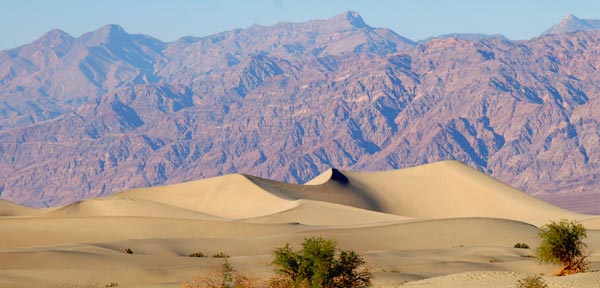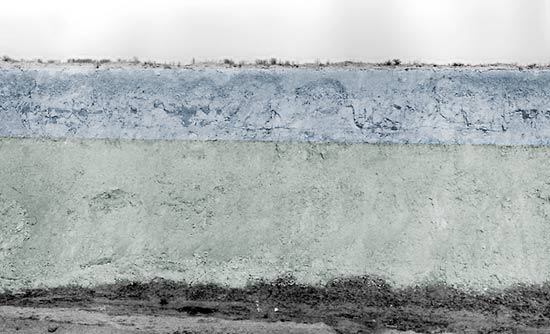Dunes: exactly how dunes are formed is still a mystery, but they are made up of vast quantities of sand. Dunes tend to have a windward face that is gradually rising longer than the lee face (front face).
The sand rolls gently up the back side propelled by the wind, but when it reaches the crest or top of the dune, gravity will cause a slip or small avalanche and automatically adjust the front face for stability. The front face is sometimes called the "Slip face" since it is formed via a slip or avalanche.
Dunes can grow to 100M or even more. Their windward side always has a lower gradient than their leeward side. The height of a dune is regulated by the wind speed. If the wind is sufficiently fast to remove sand from the top, then it will no longer grow.
Sand Seas are vast deserts made up of a variety of dunes. Dunes by their nature can move from one place to another with the shifting sand. They are not in any way cemented together.

Death Valley
A loess is dune made up of much finer particles. Because it packs better, a loess can actually create close to vertical faces. Because its finer grain makes it more solid (although it is not cemented) it can be used for structures as it will support a simple cave. Unfortunately is easy to shake down and earthquakes will often flatten such structures.
You can distinguish a loess from water sediment because it usually has no vertical layering, and often contains fossils of plants, seeds, or air breathing animals.
In the United States loess appear to be made up of the fine wind blown sediment from the terminus of advancing glaciers, The material was probably first sorted by the braided streams in front of the great ice age glaciers in the center of North America.

Two Loess structures (false color) from a rail cut in Illanois.
| NEXT | TOC | PREV |